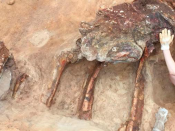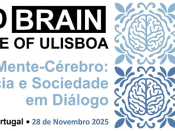Por Rafael Henriques (Fundação Champalimaud).
A imagem de ressonância magnética (IRM) possibilita o estudo de alterações morfológicas e funcionais do encéfalo de uma forma não invasiva. Esta técnica de imagiologia permite a obtenção de imagens com resolução na ordem dos milímetros. Contudo, as alterações morfológicas do encéfalo relevantes para a neurociência muitas vezes ocorrem a uma escala muito menor. Por exemplo, a formação e eliminação natural de sinapses no desenvolvimento cerebral ou a deterioração de axónios em patologia estão associados a mecanismos que só podem ser observados numa escala microscópica. Aplicando gradientes sensíveis à difusão da água nos tecidos, a IRM pode fornecer imagens com contraste sensível à informação microscópica - técnica conhecida como IRM por contraste de difusão. Nesta apresentação, irei abordar formas de inferir propriedades microestruturais através da IRM por contraste de difusão e maneiras de utilizar esta técnica em estudos no contexto das neurociências.
Diffusion Magnetic Resonance Imaging and its application in neuroscience
Magnetic resonance imaging (MRI) allows the study of brain structural and functional alteration in a non-invasive manner. This technique typically provides images with resolution in the order of millimeters; however, in neuroscience, one may be interested in probing morphological changes in smaller orders of magnitudes. For instance, synaptic pruning during brain development or axonal degeneration in pathology occurs on the micrometer scale. Images with contrast sensitive to microstructural information can be obtained by applying additional MRI gradients sensitive to diffusion of water in tissues - technique known as diffusion MRI. In this talk, I will explain how diffusion MRI can be used to infer properties of biological tissues and how this can be used in studies in the context of neurosciences.
Dr. Henriques completed his master’s in biomedical engineering and Biophysics in 2012 at the Faculty of Science, University of Lisbon. Dr Henriques did his PhD at the University of Cambridge (2013-2017), where he used different microstructural imaging techniques to study the micro-architectural changes behind healthy brain ageing. After his PhD, Dr Henriques joined the Shemesh Lab at the Champalimaud Foundation (2017-2022), where he exploited the capabilities of the pre-clinical high field scanners to validate different state-of-the-art dMRI microstructural models and developed novel methods to extract unique tissue microstructural information from advanced diffusion MRI sequences. He is currently interested in using advanced diffusion MRI to characterize microstructural alterations behind brain plasticity and pathologies such as stroke, brain tumours, Parkison's and Alzheimer's disease. Dr Henriques is also a main contributor of the large collaborative project Diffusion in Python (DIPY) which main objective is to promote the reproducibility of dMRI by providing reference implementations in an open-source environment.





















